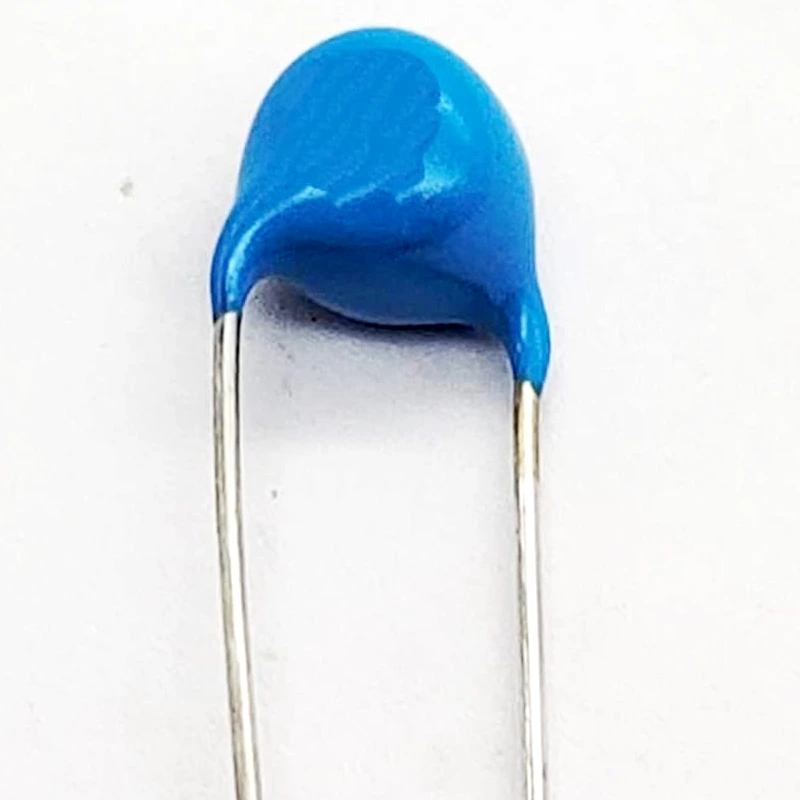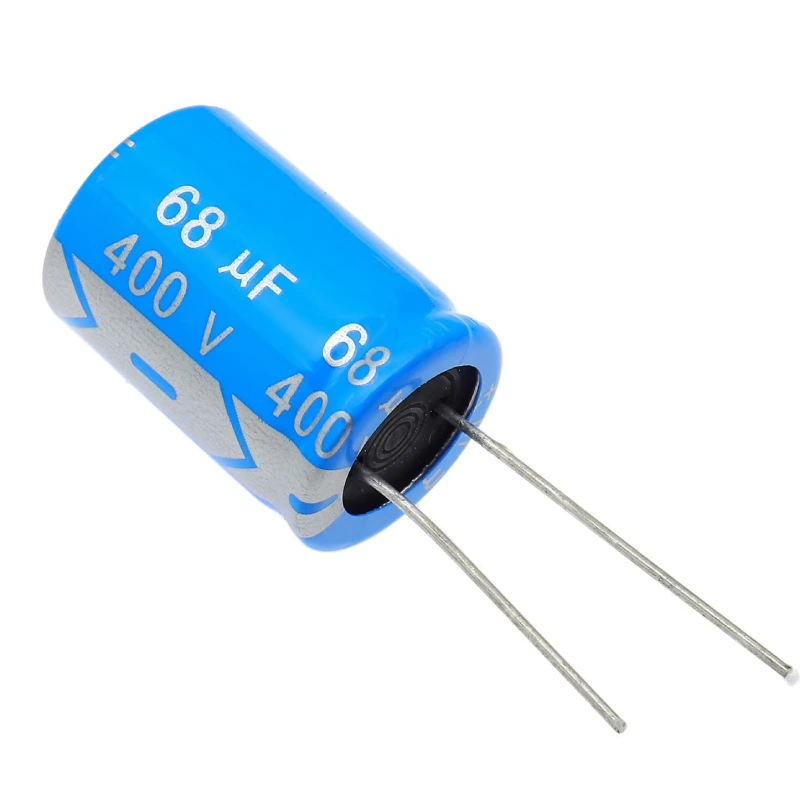Blue Capacitor:High-Quality Capacitors for Sensitive Applications
The blue capacitor represents a category of capacitors known for their distinctive blue color, which can indicate certain dielectric materials or designs. These capacitors come in various capacitance values such as 1µF, 10µF, and 100µF, making them suitable for both high and low-frequency applications.
Blue Capacitor Different Capacitor Values
Blue Ceramic Capacitor
The blue ceramic capacitor is a popular choice for various electronic applications due to its stable performance and cost-effectiveness. With a wide range of capacitance values, this capacitor is often used for decoupling, filtering, and noise suppression. The ceramic construction ensures low losses and high durability, making it suitable for high-frequency circuits. Blue ceramic capacitors are non-polarized, allowing them to be used in both AC and DC circuits. They are commonly found in consumer electronics, power supplies, and communication devices. With its small size and reliable performance, the blue ceramic capacitor is an essential component in modern electronics.


Blue Electrolytic Capacitor
The blue electrolytic capacitor is widely used in electronic circuits that require high capacitance values. These capacitors use an electrolyte as the dielectric material, allowing them to store a larger amount of charge in a compact form. The blue electrolytic capacitor is commonly found in power supply circuits, audio equipment, and motor control systems. It provides excellent energy storage and is ideal for smoothing out voltage fluctuations. These capacitors are polarized, so they must be connected correctly in a circuit to function properly. Known for their high capacitance values and stability, blue electrolytic capacitors are an essential component in many electronic applications.
Blue Tantalum Capacitor
The blue film capacitor is a high-performance capacitor made with a thin plastic film as its dielectric material. Known for its stability, low ESR (Equivalent Series Resistance), and durability, it is ideal for a wide range of applications, including signal filtering, decoupling, and energy storage. The non-polarized design of the blue film capacitor makes it suitable for both AC and DC circuits. It is often used in high-frequency applications such as audio systems, telecommunications, and power supplies. Its resistance to environmental stress, such as temperature and voltage fluctuations, ensures long-lasting performance. Blue film capacitors offer reliable operation and are highly valued for precision in modern electronics.

Blue Capacitor Applications and Uses
Automotive Industry: Electric Vehicle Battery Management Systems (BMS)
- Signal Filtering: The capacitor in BMS circuits filters out high-frequency noise, ensuring smooth communication between sensors and controllers.
- Voltage Stabilization: Positioned in the power distribution section, it helps stabilize the voltage levels to ensure consistent battery performance.
- Temperature Compensation: Placed near thermal sensors, it regulates temperature fluctuations, preventing circuit malfunction in extreme conditions.
Consumer Electronics: Bluetooth Speakers
- Signal Integrity: The capacitor is used to maintain the quality of digital signals transmitted between the Bluetooth module and the speaker’s power supply.
- Noise Suppression: It filters unwanted electrical noise, ensuring clear sound reproduction by suppressing interference from power sources.
- Power Decoupling: Located in the power section, it ensures smooth voltage delivery to sensitive components, preventing power surges that could cause signal distortion.
Industrial Machinery: Motor Control Systems
- Surge Protection: The capacitor is used across the power input to prevent voltage spikes from damaging the control board of motor systems.
- Signal Smoothing: Placed in the signal line, it smooths out electrical fluctuations, providing consistent communication between the motor and controller.
- Power Filtering: It ensures that any power noise from external sources does not interfere with the operation of critical control systems.
Medical Devices: ECG Machines
- Noise Filtering: The blue capacitor filters out high-frequency noise from the ECG signal, ensuring accurate heart readings without distortion.
- Power Stabilization: It helps maintain steady power to the machine, preventing erratic measurements due to power fluctuations.
- Signal Decoupling: Placed across the analog-to-digital converter (ADC), it isolates noisy power lines, ensuring accurate digital conversion of the ECG signal.
Blue Capacitor Capacitor Values and Codes
The blue capacitor is available in various capacitance values, typically ranging from 1µF to several microfarads (µF) depending on the application. These capacitors often come in color-coded designs, and their blue appearance signifies specific manufacturing standards or types, such as ceramic, electrolytic, or tantalum. The capacitance value is usually indicated by a number such as 47nF, 1µF, or 10µF, and in some cases, it might include a voltage rating like 50V or 100V.
The blue capacitor code is often marked with three or more digits, such as 104 for a 100nF capacitor. The first two digits represent significant figures, and the third indicates the number of zeros to add. For example, a 104 capacitor corresponds to 100,000pF or 100nF. Tolerance codes may also be included, such as “J” for ±5% or “K” for ±10%.
In some blue capacitors, especially those used in high-precision applications, a tolerance range may be narrower, ensuring minimal variation in capacitance. The blue ceramic capacitor is the most common type, widely used in consumer electronics, power supplies, and telecommunications. Blue electrolytic capacitors and blue film capacitors are generally used where higher capacitance values are required, like in power conditioning and smoothing circuits.
Blue Capacitor Working Principle
The blue capacitor operates on the principle of energy storage in an electric field. It consists of two conductive plates separated by a dielectric material, such as ceramic, film, or tantalum. When a voltage is applied across the plates, an electric field develops, causing the capacitor to store electrical energy. The capacitance value, often indicated as 1µF, 10µF, or more, determines how much charge the capacitor can store for a given voltage.
In AC circuits, the capacitor allows alternating current to pass while blocking DC, providing filtering and smoothing functions. The blue capacitor can be used in low-pass or high-pass filters to eliminate unwanted frequencies or noise, ensuring cleaner signals. This characteristic makes it ideal for noise suppression in power supplies, signal decoupling in digital circuits, and interference reduction in sensitive equipment.
In many electronic systems, the blue capacitor is employed in power smoothing applications, where it absorbs voltage spikes and helps prevent fluctuations in the power supply. It also plays a role in ensuring stable operation in high-frequency circuits, particularly where lower ESR (equivalent series resistance) is crucial. Its durability and stability make it a go-to component for high-performance electronic applications.
The models used in combination include 4700uf 50v capacitor, 47uf capacitor, 471uf capacitor, 472uf capacitor, 473uf capacitor, high voltage capacitor, aluminum electrolytic capacitor, blown capacitor, filter capacitor, mica capacitor, 50 5 capacitor, 103 capacitor,fan capacitor,audio capacitor. microfarad capacitor.
Blue Capacitor FAQs
Blue capacitors come in ceramic, electrolytic, film, and tantalum types, each offering specific advantages for different applications.
The voltage rating of blue capacitors varies, commonly ranging from 25V to 100V, depending on the type and intended application.
Choose a blue capacitor based on its capacitance value, voltage rating, and type (ceramic, film, electrolytic) that best fits your circuit’s needs.
Blue capacitors are available in a wide range of capacitance values, typically from 1µF to 100µF or higher, depending on the application.
Some blue capacitor, like electrolytic ones, are polarized, while others, like ceramic or film types, are non-polarized.